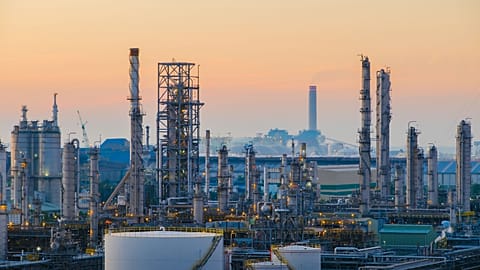The Dutch TTF benchmark for European gas prices has seen a significant drop in February 2024, falling below €25/megawatt-hour (MWh), reaching levels last seen during the summer and marking a steep decline of over 50% compared to the same period a year ago.
This drop reflects a broader trend influenced by a mix of climatic and economic factors, including warmer-than-average temperatures across the Northern Hemisphere and a notable decrease in both industrial and domestic demand for natural gas.
A mild winter, particularly in France and Germany, which are experiencing their third and fourth warmest winters in 34 years respectively, has contributed to the subdued demand for heating.
European natural gas storage levels are currently at new five-year seasonal highs, with the EU's gas reserves at 65.9%, Germany at 71.56%, Italy at 60.3%, and France at 51.3%, according to data from Gas Infrastructure Europe' (GIE)s Aggregated Gas Storage Inventory (AGSI).
A global downturn in manufacturing activities since 2022 has impacted the industrial demand for gas significantly, particularly in Europe.
Another key factor in the recent sharp decline in European natural gas prices has been the strong performance of renewable energy sources and nuclear power generation. After a couple of underperforming years in 2021 and 2022, wind and solar energy have shown significant improvement in 2023, and hydroelectric power is performing near five-year seasonal highs. Additionally, nuclear power generation has seen better output in the second half of 2023, continuing into 2024.
Natural gas 2024 outlook: Bank of America and Goldman Sachs
Francisco Blanch, a commodity strategist at Bank of AmericaGlobal Research, in a note shared last week, anticipated a greater likelihood of TTF natural gas prices trending downward into spring, particularly if the global economy remains sluggish, potentially leading to a revisit of the summer 2023 lows or even lower levels. Recent increases in investor positioning could be reversed, especially if warmer weather prompts a liquidation of long positions, further driving TTF prices downwards.
However, Blanch also highlighted some risks potentially leading to a surprising upside in natural gas prices. A resurgence in manufacturing activity would be likely to lead to increased global industrial gas demand, while disruptions in the Red Sea region could provide Europe with a significant boost. Moreover, the regulatory approval requirements for LNG terminals present a significant risk of delays in planned 2024 capacity, potentially curtailing global supply growth in the latter half of 2024 and beyond.
Goldman Sachs' commodity analysts Samantha Dart and Daniel Moreno recently lowered their TTF natural gas price forecast from €41/MWh to €31/MWh, suggesting that the global gas oversupply expected during this period could be so significant that Europe may need to offer incentives to reduce supply and prevent storage congestion next summer.
Despite the comfortable end-winter storage levels, however, they argue that Europe has not yet resolved its energy crisis. They believe another winter must pass before the risk of extreme gas price spikes diminishes.
The structural deficit in European natural gas hasn't been fully addressed, as increased LNG supply hasn't completely compensated for lost Russian imports. Consequently, European gas prices remain susceptible to supply disruptions or spikes in demand, particularly during winter.
Starting in 2025, there will be a notable surge in global LNG supply, leading to an oversupply situation in the market and subsequently driving down European gas and LNG prices, particularly throughout 2026-2028.


















